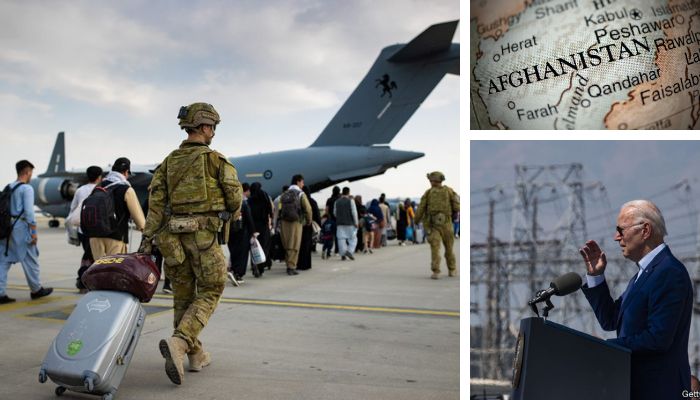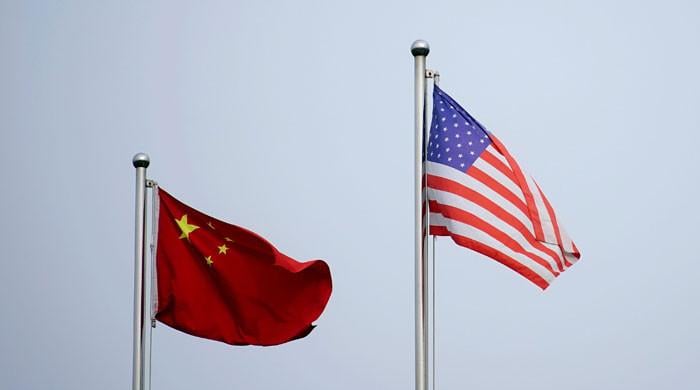What are America’s options post-Afghanistan?
"The US has left Afghanistan, but Afghanistan has not left the US yet"
July 30, 2022

Since the US withdrawal and the Taliban’s return to power in Afghanistan, the Biden administration has been pursuing a policy of limited engagement with the Taliban regime without recognising it diplomatically. The Russia-Ukraine conflict has absorbed much of the US policy attention and resources, pushing Afghanistan to the fringes of Washington’s priorities.
A US delegation recently met with Taliban representatives in Qatar. During the meeting, Washington discussed the possibility of providing the Taliban regime restricted access to the $9.5 billion in Afghan assets currently being withheld by the US federal reserves through a third-party trust.
Despite knowing that the limited engagement policy with the Taliban has a short shelf life, the Biden administration is sticking with it due to a lack of viable alternatives in Afghanistan. Through limited engagement, which includes the provision of humanitarian assistance, the US hopes to build some leverage over the Taliban to secure its interests and address the remaining security concerns.
At this juncture, the US can neither afford to abandon Afghanistan nor fully recognise the Taliban regime. The abandonment of Afghanistan will result in civil war, accelerating the growth of the transnational terrorist threat from Al-Qaeda and the Islamic State of Khorasan Province (ISKP). A recent UN report indicates that the ISKP can attain the capability of mounting international terrorist attacks from Afghanistan in 12 months, while Al-Qaeda is two years away from gaining this capability. At the same time, the US cannot afford to recognise the Taliban’s interim regime as this will legitimise it, setting a wrong precedent.
The Taliban have constituted an all-male, Pakhtun-dominated cabinet while giving token representation to other Afghan ethnic minority groups. Also, their policy towards girls’ education and women’s right to work is a far cry from their initial posturing of giving women equal rights to work and education. Despite the promises to open girls’ secondary education institutions in March, a religious ruling from Taliban supreme leader Haibatullah Akhundzada has stalled progress on reopening girls’ secondary schools in Afghanistan.
At present, there is no viable alternative to the Taliban in Afghanistan to bring order and ensure Afghanistan’s territorial cohesion, notwithstanding internal strife and simmering socio-political tensions. For example, if Washington pursues a regime change policy in Afghanistan, it will be forced to foot the bill for the new Afghan government's survival.However, the US neither has the political will nor the financial capital to commit to Afghanistan. Also, removing the Taliban regime will revive their insurgency, which might trap the US troops in Afghanistan once again. In other words, the option of regime change is a sure-fire way to reignite the old conflict.
The US is equally mindful of not putting boots on the ground in Afghanistan or maintaining a military footprint in Afghanistan’s neighbouring countries to avoid confrontation with Russia and China. Washington is currently locked in fierce geopolitical tussles with Moscow over Ukraine and Beijing over Taiwan and the South China Sea; the Biden administration is cautious not to turn Afghanistan into an arena of great power competition.
The US is working with its allies and partners to pursue the same policy template in Afghanistan to create a synergetic effect and leverage over the Taliban regime to address the issues of common concern. Washington fears that if Western countries follow different policy frameworks in Afghanistan, the Taliban will play them against each other by engaging with the more lenient countries and avoiding business with the stricter ones. India’s decision to reach out to the Taliban and to reopen its embassy in Kabul, though at a lower level, should be seen in the same light.
Another purpose of the limited engagement policy is to avoid worst-case scenario outcomes in Afghanistan. For example, Afghanistan’s implosion will trigger a huge wave of refugees towards Europe, which is already grappling with a human displacement crisis exacerbated by the Russia-Ukraine conflict. The US is doing the bare minimum to ensure Afghanistan’s banking system does not collapse, the humanitarian crisis does not spiral out of control, and the people do not die of hunger and disease.
Afghanistan’s threat landscape has evolved since the withdrawal of US forces. On the one hand, America’s rival states like Iran, Russia, and China are trying to advance their interests by working with the Taliban regime. On the other hand, the threat of Al-Qaeda and the ISKP has increased even though the flow of foreign terrorists to Afghanistan is negligibly low. The Taliban are still aligned with Al-Qaeda and provide it with protection, despite downplaying their ties with the latter in public. Al-Qaeda is also laying low so as not to create problems for the Taliban regime, but it enjoys freedom of movement and assembly in Afghanistan.
The frequency of Al-Qaeda chief Dr Ayman Al-Zawahiri’s videos has increased, providing proof of his life and continued presence in Afghanistan. The group is planning its organisational revival and discussing future strategy. Beyond giving generic assurances of not allowing Afghan soil to be used for terrorism against the US and its allies, the Taliban regime has not taken any steps to satisfy the international community’s concerns.
The US has left Afghanistan, but Afghanistan has not left the US yet. Washington has unfinished business in the form of the lingering threat of transnational terrorism, which will keep it engaged under the ‘limited engagement policy’ with the Taliban for the foreseeable future. How the situation evolves in Afghanistan will also dictate American policy choices and options.
The writer holds a PhD in South Asian Studies. She tweets @AmeenaTanvir











